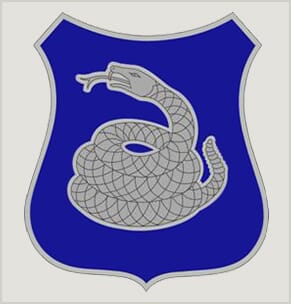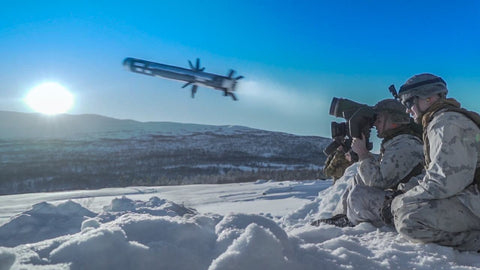What is the Point of Presidents Day & Why We Celebrate?

George Washington’s birthday is a federal holiday on the third Monday in February. The day marks the birth of the first president of the United States. It is one of eleven permanent holidays established by the U.S. Congress.
It is important to note that federal holidays apply only to the federal government and the District of Columbia; Congress has never declared a national holiday binding in all states. Each state decides its own legal holidays. But it is important to note that even though Washington’s birthday is celebrated the third Monday in February, he was actually born in Virginia on February 11, 1731, according to the then-used Julian calendar. In 1752, however, Britain and all its colonies adopted the Gregorian calendar which moved Washington's birthday a year and 11 days to February 22, 1732.
But what is the point of Presidents Day? Well, for a very long time Americans have always celebrated Washington’s Birthday; even before Congress declared it a federal holiday. On the 100th anniversary of his birth, there were many national-level celebrations and Congress even established a committee to manage the yearly celebration.
At the recommendation of the committee, chaired by Henry Clay of the Senate and Philemon Thomas of the House, Congress adjourned on Feb. 22, 1832 to pay homage to Washington's memory and to commemorate his birth.
On the 130th anniversary of Washington’s birth, the House and Senate commemorated the event by reading aloud Washington’s farewell address. In the House Chamber, the House and Senate, along with several cabinet officials, Supreme Court Justices and military officers, gathered to listen to the Secretary of State read the address aloud. Eventually, the reading of George Washington’s farewell address became an annual event for the Senate, a tradition that is still observed to this day. So, what is the point of Presidents Day? It could be, for some, to honor the first president who turned down a third term, a move he thought was healthy for the good of the nation.
It wasn’t until Jan. 31, 1879 that Washington’s Birthday became a federal holiday. Congress made Feb. 22 a legal holiday to be observed by federal employees. However, the act did not make it a paid holiday for federal workers, so in 1885 Congress passed legislation that required federal employees to be paid for all federal holidays, making all federal holidays paid.
Washington’s Birthday was celebrated on Feb. 22 for decades, but in 1968 Congress passed the Uniform Monday Holiday Act to “provide uniform annual observances of certain legal public holidays on Mondays.” The hope of legislators was to create more three-day weekends with the hope that the time off would bring morale and fiscal benefits to the nation. In 1971, those long weekends began. The law also moved Columbus Day, Memorial Day, and Veterans Day to create additional three-day weekends.
One of the provisions of the Monday Holiday Law changed the observance of Washington’s birthday from Feb. 22nd to the third Monday in February. Interestingly, the move guaranteed that Washington’s birthday would never be celebrated on his actual birthday since the third Monday in February cannot fall any later than Feb. 21. In addition, and contrary to popular belief, the U.S. government has never required that Washington’s birthday be officially changed to President's Day. What is the point of Presidents Day? It could be to give American workers a well needed break and to fuel the economy with small injects of fiscal energy.
The third Monday in February is known as Presidents Day and while we can ask what is the point of Presidents Day, one thing we do know is that the holiday is meant to recognize presidents, not just Washington.

Abraham Lincoln was born Feb. 12, 1809 and because he was president of the United States during the nation’s most tumultuous period, the Civil War, it is fitting that he is also recognized for Presidents Day. During the 19th century a dozen American states celebrated the third Monday in February as “Washington and Lincoln’s Birthday.” Other states called the combined birthday celebration “Presidents Day.”
What is the point of Presidents Day? It is likely to recognize two men who had lasting and profound impact on the United States of America unlike any other prominent American men.
Now, while there are many ceremonies throughout the country to mark Presidents Day, and many across the country enjoy a day off, since 1971, American retailers have branded their sales campaigns as Presidents Day sales and used the patriotic event to sell the products. If you ask a retailer what is the point of Presidents Day the answer is simple, to sell stuff.
However, if you ask any American, especially those who have served the nation in uniform or as a civilian, what is the point of Presidents Day, the answers might vary, but overall, they will be similar in meaning. Presidents Day is a day to recognize great patriots of our American history. Men who put country before self. Two men who had overwhelming respect for the republic they served.
According to the White House website: “We celebrate Washington’s Birthday on the third Monday of February each year—the result of the 1968 law mandating that a number of federal holidays occur on Mondays. Incidentally, the third Monday in February can never fall on the 22nd, meaning the federal holiday will never land on Washington’s actual birth date.”
What is the point of Presidents Day, if you ask us, it is to remind you that you do not matter. It is the republic that matters. If the federal government can change the birthday of the greatest historical figure in American history, how do you think it feels about you? Kidding aside, it is the nation that matters.


































